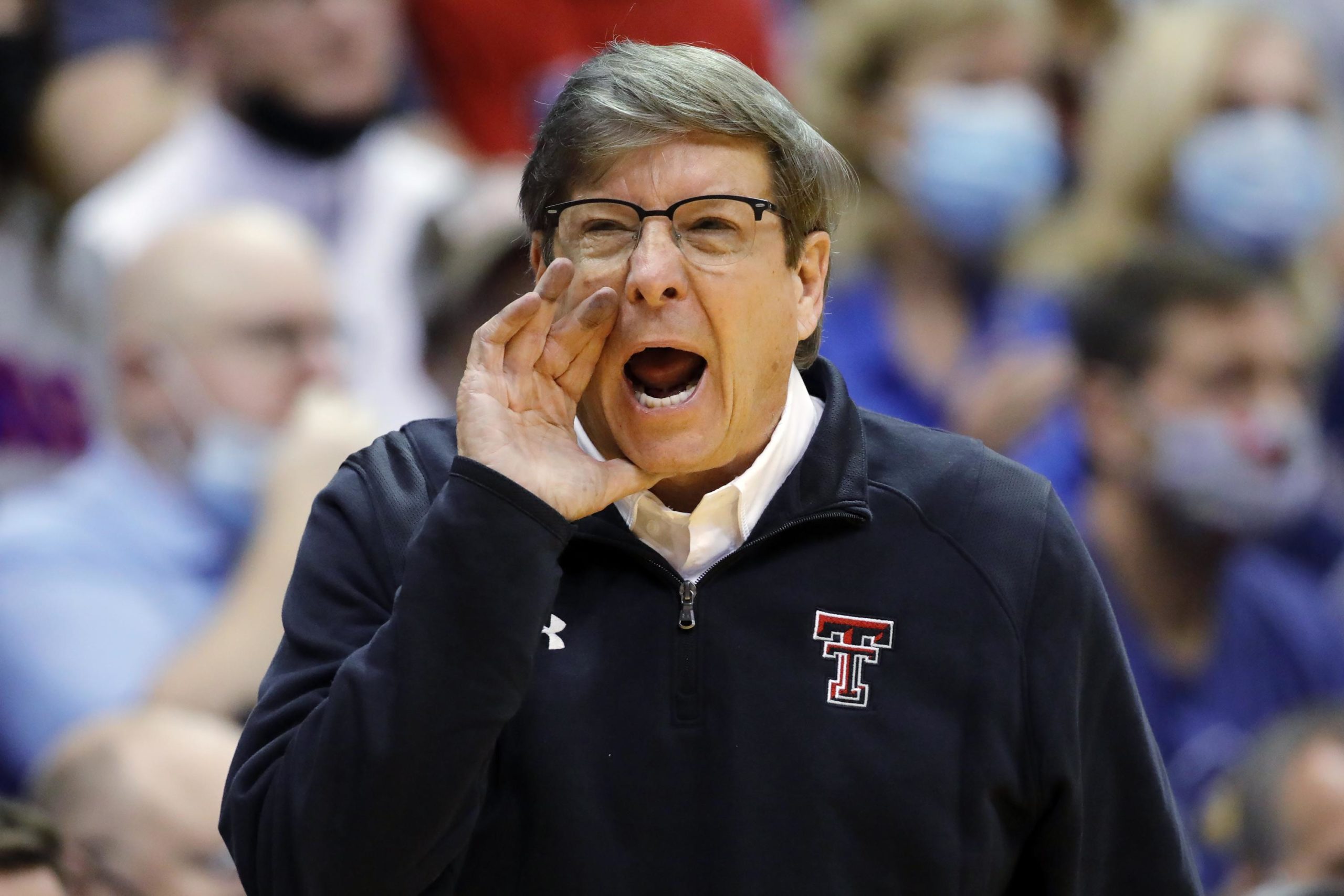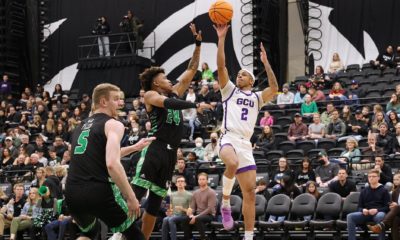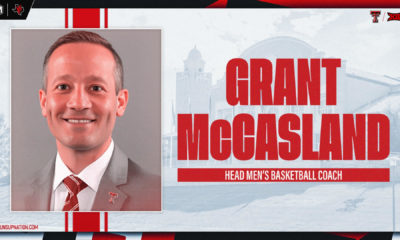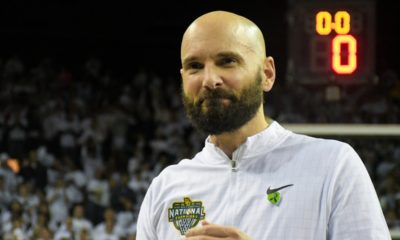
As of today, we are just past halfway through the college basketball regular season, which feels hard to believe given how it feels like there are still so many unknowns nationally and for this Texas Tech team. We’ve seen the Red Raiders play 15 of their 31 scheduled games so far, with the team compiling a record of 10-5, with losses to Creighton and Ohio State in Maui in addition to three gut-wrenching losses to start Big 12 play against TCU, Oklahoma and Kansas. So far, this team looks to be better at shooting and worse at defense than previous iterations of Texas Tech Basketball, but there are far more complex things to take away from this season through the opening slate of games, both looking at the numbers and watching the tape.
General Thoughts
Perhaps the best place to start with this team is to look at the schedule. A lot of people (most notably one Jeffery Goodman) have made a point to criticize the Red Raiders for their admittedly weak non-conference schedule this season, and to a degree that criticism is fair. It is true that Tech has played one of the weakest schedules in the nation so far (266th in T-Rank SOS and 304th on KenPom), but it’s worth looking at the composition of that schedule to get a better understanding of why the Red Raiders ended up with such a weak slate. Tech started the season with two buy-games against Northwestern State and Texas Southern. From there, a game against Louisiana Tech should’ve been a Q3/Q2 opportunity depending on how the Bulldogs did this year, and considering the fact that they were a 20-win team for four consecutive seasons and ranked top 105 in T-Rank for the last three years, it seemed reasonable to expect them to at least be a low-end Big 12 level win on the resume. After that game, Tech went to Maui and ended up playing Creighton, Louisville, and Ohio State. In most years that would be a slate of three Q1 games. Instead, the Cardinals of Louisville will probably be literally the worst win on the season for Texas Tech from a NET perspective. After Maui, they were matched with the worst possible Big East team in Georgetown, and then finished their non-LSU slate of non-conference games with a slew of buy-games against overmatched teams, although Nicholls State and Eastern Washington will both be contenders for the automatic bids in their respective conferences.
Losing to both Creighton and Ohio State in Maui sucks, because with the way the rest of the schedule played out, it appears that those were your only two chances for Q1/Q2 wins in non-conference play, and depending on how the rest of the year plays out for Louisiana Tech, Eastern Washington, and Nicholls, you might not even end up with a Q3 non-con win. Why did that happen? Well, for one having Georgetown and Louisville be “literally two of the four worst power conference teams in America” bad instead of just mediocre or even good was not something that Tech could control, especially given that both games weren’t directly scheduled by Tech, but rather by Maui and by the Big 12/Big East in the case of Georgetown. Furthermore, Louisiana Tech and Nicholls State have also been underwhelming, and while they were never going to make the schedule great it could’ve at least given Tech two better data points heading into the year. Is Mark Adams faultless in this? Absolutely not. Going forward I feel like Tech has to be more aggressive in trying to schedule home-and-home games, because a year like this can happen from time to time, and even if the overall strength of schedule ends up fine because of the ridiculous assortment of teams in the Big 12, such a weak non-conference slate will absolutely hinder the team in bubble discussions. With that said- there should be anywhere from 12-15 quad one-win opportunities left on the schedule, so in that sense, Tech should be fine as long as they can win at least four or five of them and take care of business in the rest of their games.
The other general thought that I wanted to expand on was roster construction. To be completely honest I’ve been a bit skeptical of how this roster was put together from day one, and two months into the season there are still holes that could’ve been predicted. What made Texas Tech so successful last season was the sheer versatility of everyone on the roster. With this year’s team, everyone is slotted into a set role. Pop Isaacs can only function as a 1 or a 2. Same thing for De’Vion Harmon. Jaylon Tyson has exclusively played as a wing with two guards and two bigs. Kevin Obanor can’t be a rim protector, so he has to be out there with Daniel Batcho, but Batcho can’t play all 40 minutes, especially with his current health. Lamar Washington can function as either a low-usage wing or a guard, but he seems to be the only guy capable of getting heavy minutes in such a role off the bench. Kerwin Walton, Elijah Fisher, and D’Maurian Williams have all fallen out of the rotation. Robert Jennings and KJ Allen are both getting minutes, but both of them struggle to switch or provide meaningful rim protection.
The lack of versatility and depth is not a huge issue if the starting five is healthy and playing well, but it decreases the margin for error substantially. Last year we saw UNC almost win a national championship and Gonzaga emerge as a top team nationally with a similar roster construction approach, but it’s one that has inherent flaws. A team like Kansas is tailor-made to exploit teams that can’t switch well, which ironically enough is Texas Tech this year, whereas last year and in various previous years Tech was the prime example of a team that could switch 1-5. The spacing and ball-handling improvements are legitimate and nice to have, but it’s tough to play 40 minutes of sound basketball when the opposing team has more adjustments that can be made and more lineup options. Anyways, on to more specific stuff
Player notes:
- I really like what Pop Isaacs has shown both as a shooter and as a playmaker this year. The shot has been everything it was billed to be and then some. He’s shooting 42% from three on six attempts per game, with nearly half of them coming off the dribble. The form is a little interesting (his release point is a bit low on pull-ups and his feet sometimes cross on CnS looks, which is usually not ideal), but it’s hard to argue the results when he’s hitting shots like this:
And this:
- Isaacs’ playmaking is impressive even if he still can be a bit erratic at times, but his defense has been probably the most surprising thing for me. I still don’t see him as a positive on that end, but his on-ball instincts are good enough to allow him to be disruptive, and he’s done a good job of cutting down on the number of mental lapses on that side. The lineup stats indicate that he’s as good as every alternative not named Lamar Washington on that end, so at worst his effort will have to do. And offensively, he’s a total firecracker that can light any team up. He might not be Trae Young, but he’s a ridiculously talented player. We saw what happened when Tech missed him against OU last night, as his off-ball gravity and playmaking generate opportunities for other shooters that simply aren’t there otherwise.
- Speaking of Lamar Washington, it’s been great to see him become an integral part of the rotation as of late. Washington has the tools to be a great defender, and so far his on-court play has shown that his instincts on that end are already developing far beyond what is expected of most freshmen.
These two plays from the end of the KU game showcase the instincts really well. In the first, Washington leaves his man in KJ Adams to sprint towards a wide-open Gradey Dick in the corner, getting there just in time to provide a heavy contest. In this play, he trusts the help-side defense will prevent Adams from getting the ball easily. He also commits to the contest before the ball has even left Dajuan Harris’ hands. The second clip is a bit of a mistake from Washington, as Obanor has a better angle to cut off the baseline and force a charge opportunity, but he gets there so quickly that it throws off Dick’s drive, forces a slow pass, and had Batcho been more active would’ve led to a difficult late-clock scenario for McCullar (not that it mattered- he missed the shot anyway with a light contest from Obanor). Washington will make mistakes as a freshman. It’s part of growing up. But there’s already a ton to like about his game on the defensive side of the ball, and his on-ball defense and off-ball instincts are already better than pretty much everyone on the team.
- Offensively, Washington is still a bit more of a work in progress. The shot still has a long way to go, but he’s shown flashes of being a great playmaker and having the ability to drive to the basket effectively. Washington has been expected to score 1.42 points per possession at the rim according to Shot Quality, a rate that puts him in the 96th percentile. Furthermore, traditional stats indicate that he is finishing at a 67% clip inside, which is still really good. Washington is best in transition, where his understanding of leverage and downhill, attacking style can be utilized.
- I’m officially a little concerned about De’Vion Harmon. Not to the point where I feel like he’s going to be benched or not have a key role on the team, but along the lines of wondering if his limitations are going to become more prevalent as Big 12 play progresses. Offensively, Harmon is having a bizarre season. His assist-to-turnover ratio is really good, although I still think he can be a little too conservative and reactionary with his passes. His shooting, however, has been considerably worse than anticipated, with him being under 25% on the season on just 2.3 attempts per game. Harmon not making threes is one thing, but him not taking them is another. The impact that has on spacing is pretty massive, as a PBH that is not a willing shooter allows the defense to play a more heavy drop scheme, which in college can be overpowered with the lack of a defensive three-second rule. The finishing at the rim has been good for Harmon, and he is still really efficient on the fastbreak (97th percentile in transition per Shot Quality), but in the halfcourt, it’s hard not to think that Harmon’s lack of shooting and general efficiency woes have slowed down Tech’s offense. He had a really good night against Oklahoma, but most of those looks came in transition, and while he is extremely efficient getting to the rim, there are going to be games where defenses are able to key in on that. For him to be the most impactful version of himself, he will have to find ways to shoot effectively and be a solid passer even if he cannot get downhill.
- Defensively, it’s a similar story. Harmon does a lot of good things. He shows flashes of being an elite point-of-attack defender and his off-ball defense has been mostly solid, but there are a few concerning moments and they showed up in a big way against Kansas.
Beyond just these two moments, Harmon had quite a few other off-ball lapses that were less than ideal. It’s not something that shows up frequently on tape in every game, but it’s worth monitoring. He does a lot of ball-watching, which provides many steal opportunities, but it does lead to him getting burnt at times. Regardless, I think the defense has been mostly positive. Specifically, in PnR and other high-stress point-of-attack situations, Harmon has shown great instincts that allow him to get away with certain mistakes. The reach-from-behind poke steal was utilized twice in the TCU game and nearly worked again against OU. It’s a move straight from Jose Alvarado’s book, and it is a big weapon that Harmon can take advantage of, particularly in transition situations or in PnR situations where he is on the defender’s hip.
- I’m going to save my words on Jaylon Tyson for a piece more centered on him as an individual at some point, but I will say that I’ve been pleasantly surprised with what I’ve seen so far. His defensive instincts are better than what I expected, and to that point, he leads the team in deflections from what I’ve tracked. I’m still a little skeptical about the on-ball stuff, and like Harmon, he does get caught ball-watching occasionally, but I’d say he’s been above average as a defender and that’s better than a lot of people expected.
- Offensively, I love what Tyson’s done as a spot-up shooter, as he was shooting 50% from three when I wrote this (pre-Oklahoma), and I really like the self-creation flashes that he’s shown. That said- if he could cut out possessions like this:
I’d be thrilled. Yes, that was a late clock situation, but he was in that situation because he called for an iso with 11 on the clock on the baseline in a situation where help could easily come and Batcho couldn’t effectively vacate the area. He’s shooting only 32% on midrange shots this year, yet they make up 27% of his total attempts. He’s such a smart player, yet sometimes has some mind-boggling offensive moments. Anyways, that’s my little rant. He’s still incredibly talented as a scorer, and I’ll have more words on him in the near future.
- Kevin Obanor is back to being a great shooter. Whether that is sustainable outside of the USA remains to be seen. People forget that last year he shot 40% from three in home games compared to under 27% everywhere else. Obanor provides lots of value to this offense as a scorer, screener, and floor spacer, but without the shooting, it’s hard to imagine Tech being successful. With that said- the Red Raiders have done a much better job of giving him open CnS looks from three, with about one per game coming from pick-and-pop action and quite a few coming from simple drive-and-kick opportunities. Really, Obanor is incredibly efficient as long as he doesn’t dribble more than once in a possession, which has been the case for at least the last two years. He can score at the rim he has good post moves, and he can shoot the lights out at times. That’s a great offensive big.
- Daniel Batcho was amazing to start the season, simple as that. The 6’11 sophomore was sensational in Maui, was arguably Tech’s best passer in the first few games, established himself as a premier shot blocker, and even knocked down his first few threes. Batcho has since been slowed by injuries and a bizarre illness that has seen him lose 15 pounds, and as such he’s looked a little off since the start of conference play, but when healthy it’s hard to argue against Batcho being Tech’s most important player for two reasons. 1. There’s nobody really behind him that can do anything close to what he does and 2. He’s a guy who can finish at an 80% clip at the rim, set screens better than anyone else on the team, make clean passes out of the post, switch 2-5, and be an effective team defender in addition to his shot-blocking. We’re talking Tariq Owens with a post-game if Batcho can stay healthy and reach his realistic potential. Again, depending on his health, I want to talk more in-depth on Batcho at some point so I’m keeping a bit in reserve here but I’m not sure people (both inside and outside of Lubbock) realize just how good Batcho is already and could feasibly be.
- KJ Allen had a great start to the year and has established himself as the third rotation big, but his lack of a refined offensive game, frequent defensive miscommunications, and inability to function as a rim protector limits what he can actually do. Still, he’s good in transition, which is useful given the pace Tech has run at in the last eight games, and his rebounding is great to have in the lineup. Watch the thread below to see a few KJ clips in there, as well as Elijah Fisher, who again has a ton of raw talent but until he either A. can shoot the ball well offensively or B. Can avoid getting lost defensively, he won’t get playing time. I don’t like how short his leash is, but at the same time, the film shows a lot of mistakes that are giving the other teams opportunities. If he’s doing that in a live-game setting, it’s not hard to imagine him struggling in scrimmages and thus not having the trust of the staff.
- I like where Robert Jennings is at defensively, as he’s shown an ability to switch on to guards and be competent while also being really good as a post defender given his size. He probably won’t ever be an elite shot blocker but with his lateral ability, he can be a great team defender at some point. He has a long way to go and still looks lost quite a bit, but I’m excited to see his growth heading into next year. The offense is like playdough with him… there’s not much of a defined role that he can provide at this stage, but he has foundational skillsets to mold him as a post player, pick n’ pop specialist (as we saw with him knocking down a three in the OU game), rim runner, or some combination of all of the above depending on what he and the staff prioritize in the coming off-seasons.
- That leaves D’Maurian Williams and Kerwin Walton. I don’t think either of them will get more than spot minutes going forward unless there are severe injuries (i.e. Pop having a concussion and missing yesterday’s game) or one of them turns the corner defensively. Williams has looked promising at times on that end but conversely, his lack of ball handling has been pretty disappointing considering what he showed at Gardner-Webb. Walton is exactly who he was at UNC, except the shot has not been going down as frequently. I expect that to change, but as beautiful as the shot is it’s hard to justify him getting heavy minutes when the defense and playmaking simply aren’t there. Oh, shoutout to CJ Williams, who I actually think could eventually be a high-major rotation player with a bunch of added strength and a few years working as a ball handler. I like the form of his shot and his defense has been at least passable in the little bit that we’ve seen of him.
- Not going to talk about Fardaws Aimaq and that drama. If you haven’t read my season preview or checked out one of the podcasts Ryan and I did discuss his game, check those out, otherwise expect to see a rusty version of him that should hopefully be able to contribute at some point this season.
Final Thoughts
This Texas Tech team probably has to go 9-9 in conference to make the tournament, which I don’t know how realistic that is, especially considering they’re starting the year in an 0-3 hole. They’re perfectly fine on paper, with most metrics having them as a top 35 team, but inexperience and a couple of key roster flaws will probably hurt them in marginal games this year, which will be most games in the Big 12. Still, the top six guys in the rotation can go toe-to-toe with anyone in the Big 12, and there are still many reasons to be optimistic about the future of this program. The concept of having Isaacs, Washington, Tyson, and Batcho all getting better and coming back next year to match with new addition KyeRon Lindsay is very enticing.
A few tendencies to look for in the second half of the season that I feel may influence Tech’s success (note: all stats were as of the morning of 1/7/23, and do not include the Oklahoma game):
- Three-point shooting/attempt rate (37.5%/.37 AR- 198th nationally in attempt rate)
- Pace (68.8 possessions per game, averaging 75 over the last five games… which is a ton). On pace for the fastest offense since Pat Knight’s last team.
- 2pt field goal discrepancy (57.6% offensively vs 46.4% defensively is among the best nationally)
- Free throw rate (40.1 would be the highest rate for a Tech team since 2015)
- Assist rate (55%, which is the second highest since 2010 for a Tech team).
- Defensive turnover % (23.6%, which is 23rd nationally but would also be Tech’s lowest finish since 2017).
There are more numbers that will be important but those all are stylistic traits that I feel directly correlate with what you see on film. Anyways, as always all stats come from https://barttorvik.com/, https://shotquality.com/, and https://kenpom.com/. I’ll be back with some more previews and player-specific articles in the near future. Until then, follow me on Twitter at @emorylyda41, and Wreck ‘Em.


















